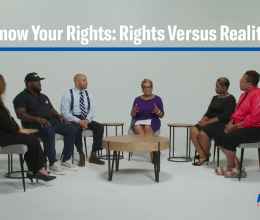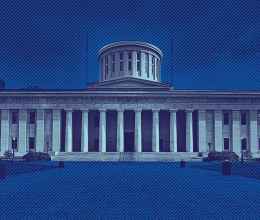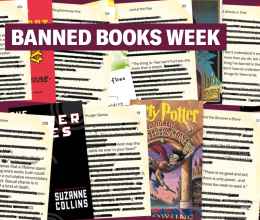“Any treatment, especially in the schools, of questions like war and peace, racism – black and white – religion and patriotism, is bound to raise disagreements and stir emotional response…We know of no way to stimulate the growth of our youth if we insulate them from the real issues.”
-Coalition of ministers in response to a school book-banning incident
Prior to the 1450s, Europeans considered the residents of Africa exotic and different, but not necessarily inferior. Timbuktu, a small town in western Africa, was originally regarded by Europeans as a center of learning and early interactions with Moors from Africa were credited with helping to usher in the European Renaissance.
However, as Europeans continued to explore other continents their demand for labor increased. Thus began the race-based portrayals of Africans, labeling them unintelligent, backward, and uncivilized. Eventually, these race-based stereotypes became so common, Europeans forgot about their previous experiences with Africans and a system of oppression was born.
This was the system in place in the early 1600s, when Europeans began permanently settling in North America. In order to separate the population and prevent upward mobility among the lower classes, settlers relied on perceived racial differences to create a hierarchy that placed ‘white’ at the top, black at the bottom and other races in-between. This strategy created a semi-permanent working class that would provide the labor used to build the United States of America.
While slavery is no longer permitted and overt race-based oppression has since become taboo, the use of race as a divisive force is a fundamental part of our past and our present.
Aside from being used to build the foundations of the country, issues of race, ethnicity, and slavery dominated our early foreign policy concerns. They influenced our interactions with Haiti, Cuba and Mexico and they played a significant role in the First Seminole War. Four hundred years later, race and ethnicity continues to influence everything from our criminal justice system to our legislative policies.
Despite, or perhaps because of this long-running influence, race and ethnicity are also very sensitive topics of discussion in our country. Unfortunately, this makes them the frequent target of censorship efforts.
Download a print version of Race and Censorship in America, by Jasper Harris
Censorship can be formally defined as the “suppression of ideas and information that certain persons – individuals, groups, or government officials – find objectionable or dangerous.” It is a concept that inevitably conflicts with our first amendment right to freedom of expression and the United States has always struggled to find a balance between the two. When it comes to race and ethnicity, censorship often has the upper hand.
Racial inequality has been a part of U.S. history since the very beginning, but discussions about this reality are carefully controlled. Malcolm X, a prominent figure of the 1960’s civil rights movement, was cut from history textbooks because some saw him as a traitor to the country. The Rabbit’s Wedding, a children’s book about a black and a white bunny, was restricted in an Alabama library because some individuals, including an Alabama senator, believed it would encourage miscegenation. Jubilee, a historical novel that depicts America’s racial past, was challenged because some feared its historical honesty would create ‘racial strife’.
Modern-day Senators rarely rail against miscegenation in public and popular opinions of Malcolm X have also changed throughout the decades, but this basic underlying fear of “racial” or “ethnic” strife is still used to justify race and ethnicity-based censorship even today.
As a country, the United States likes to imagine racial controversy as a thing of the past. Slavery has been abolished, Jim Crow laws have been overturned, explicit racism has become taboo, and we have twice elected a Black president. Today, terms like “color-blind society” and “post-racial” America can be heard across academia. And yet, racial injustice continues to plague our nation.
The school to prison pipeline funnels African American and Latino students from the education system to the criminal justice system, racial profiling remains a common unjust practice among many law enforcement agencies, and voter disenfranchisement continues to target racial and ethnic minorities as well as the poor. Meanwhile, we continue to eliminate racial discourse and stifle more and more minority voices.
Modern textbooks are an excellent example. As educational records of America’s past and present, there is ample reason to include nuanced discussions of race and ethnicity. However, these books are traditionally too focused on presenting America in a positive light to give adequate attention to the history of injustice that has shaped, and continues to shape America in so many ways. Publishers know that in order to sell their product, they must create a “patriotic” storyline that will satisfy their buyers. Often this means ignoring or minimizing the racial strife that has plagued our country since its conception.
A recent example of this phenomenon occurred in 2010 when Texas, one of the county’s largest and most powerful textbook buyers, revised its social studies standards to downplay the role of slavery in the civil war and minimize the influence of racial minorities in the Civil Rights movement.
In this country there is no doubt that racial issues are controversial and sometimes sensitive to discuss. Thinking about them and talking about them often leads to uncomfortable conversations, strong emotions, and tense disagreements - things that many individuals (and many leaders) would rather avoid.
This is precisely what makes these conversations so important. We should not be ignoring, diluting, banning, censoring or re-writing U.S. history simply to avoid controversy or uncomfortable ideas.
With this in mind, the ACLU of Ohio celebrates Banned Book Week each year by highlighting the work of banned, censored, and challenged African American authors across the country. We do this as a reminder that censorship not only curtails our first amendment right to free expression, it prevents us from understanding, addressing and overcoming the problems we continue to face as a country.





